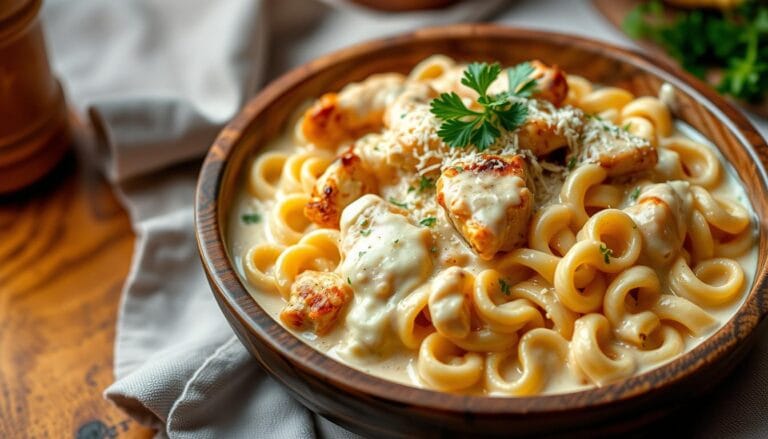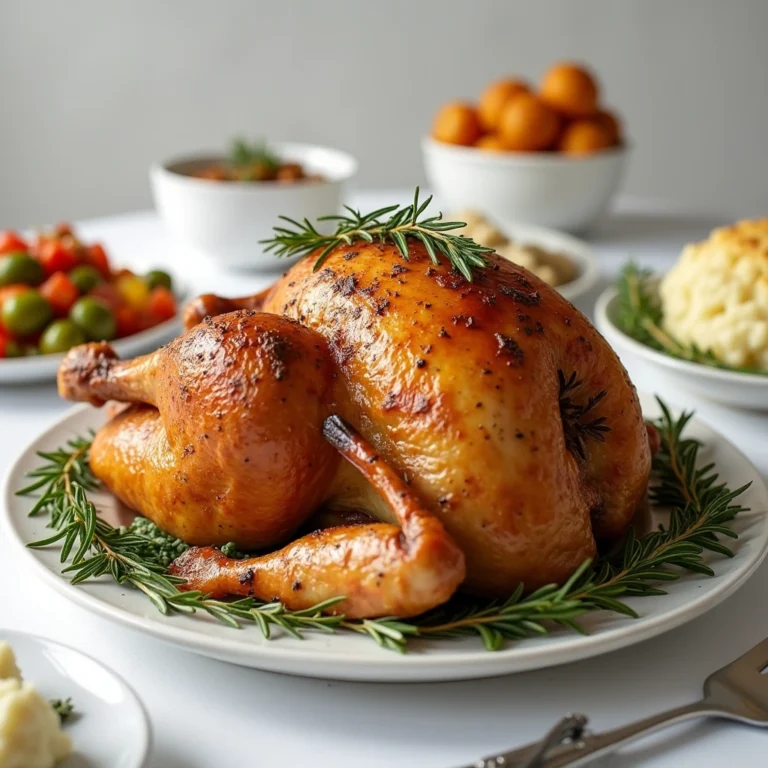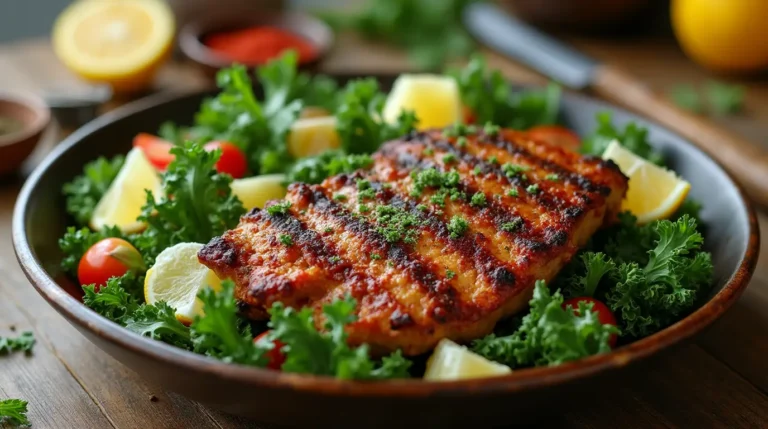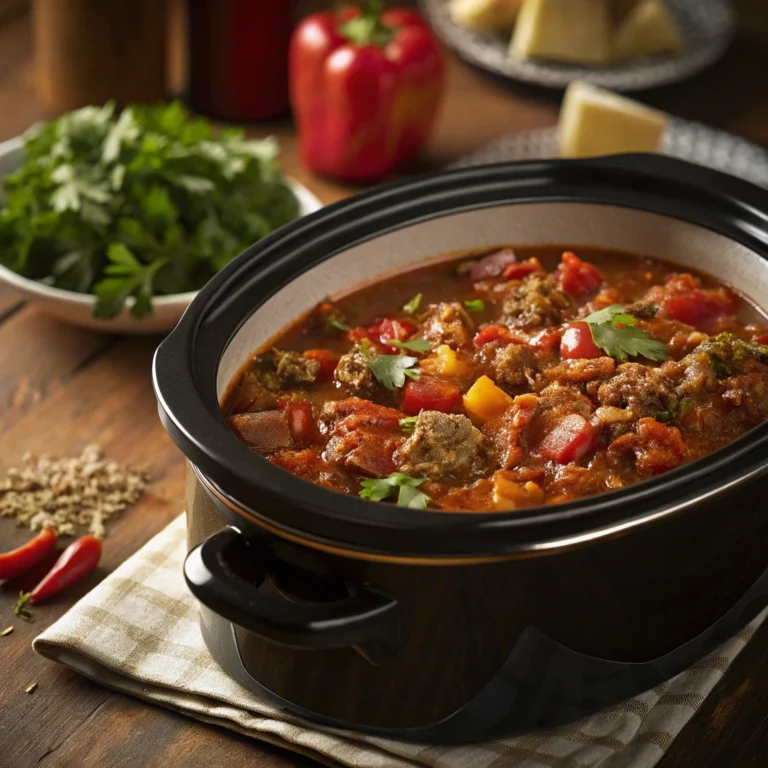Cajun Seafood Boil Sauce Recipe: How to Make It Perfect
- Preparation Time: 15M
- Cooking Time: 20M
- Total Time: 35M
- Type of recipe: Main Course/Sauce
- Cuisine: Cajun, Southern, Louisiana
- Recipe Yield: 6 servings
- Calories: 215 per serving
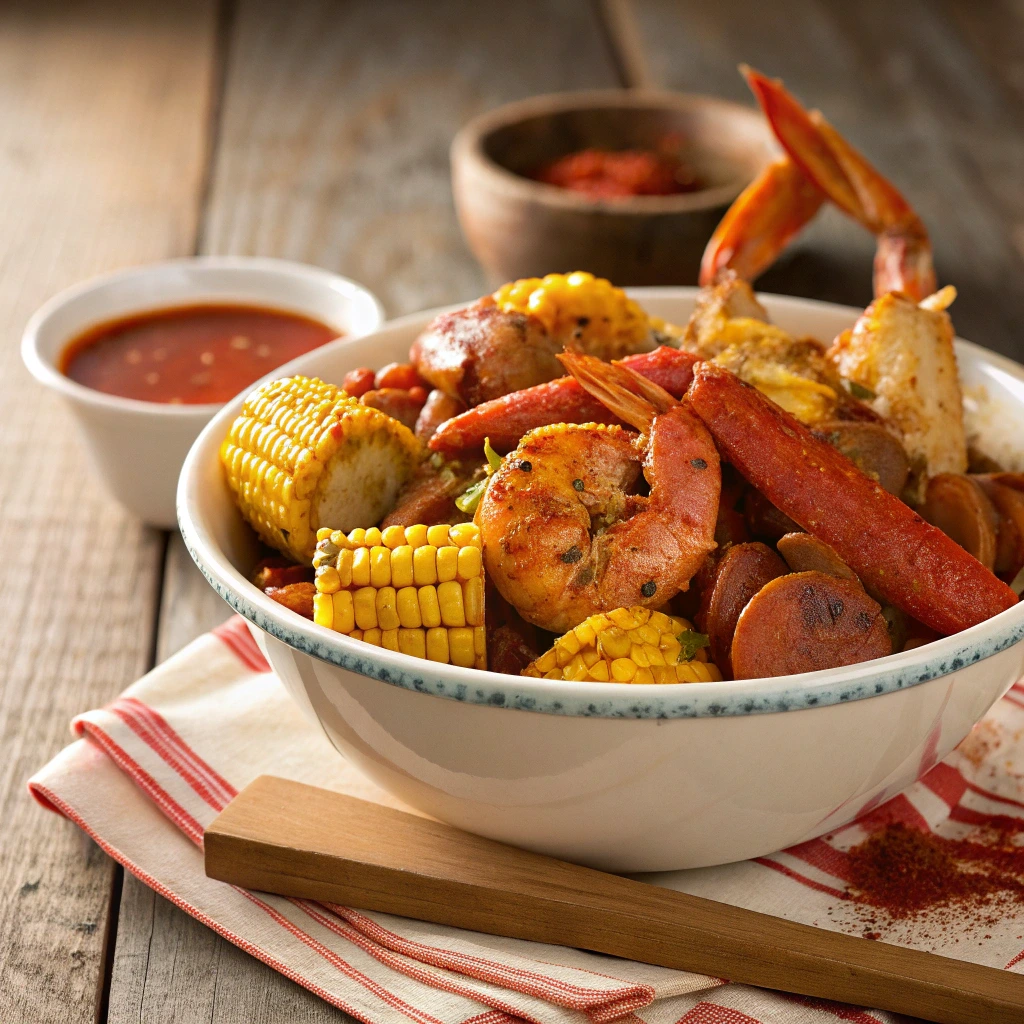
Growing up in Louisiana, I learned that a perfect seafood boil isn’t just about the catch—it’s about the sauce. The rich, buttery Cajun seafood boil sauce recipe has been a cornerstone of family gatherings. It creates memories as vibrant as the flavors dancing on your plate.
Dive into the world of authentic Southern cooking with this ultimate cajun seafood boil sauce recipe. Whether you’re a seasoned home cook or a seafood enthusiast, this guide will help you craft a sauce that captures the heart and soul of Louisiana cuisine. From selecting the right seafood boil ingredients to mastering the perfect spice blend, you’ll unlock the secrets to a truly memorable seafood feast.
Key Takeaways
- Master the authentic Cajun seafood boil sauce technique
- Understand the essential flavor profiles of Southern cuisine
- Learn how to balance heat and richness in your sauce
- Discover professional tips for creating restaurant-quality seafood dishes
- Explore the cultural significance of Cajun cooking
Understanding the Magic of Cajun Seafood Sauce
Explore the world of southern cooking, where creole seasoning makes meals special. Cajun cuisine is all about a mix of flavors that celebrate culture and creativity.

Cajun spices are more than just seasonings. They celebrate Louisiana’s lively food scene. These flavors come from the area’s rich culinary history.
Origins of Cajun Seasoning
The tale of Cajun seasoning starts with French Acadian settlers. They mixed their old recipes with local ingredients. This created a unique spice blend that captures southern cooking’s essence:
- Paprika for rich color and mild warmth
- Cayenne pepper for signature heat
- Garlic and onion powders for depth of flavor
- Dried herbs like thyme and oregano
Why Butter-Based Sauces Work Best
Butter is the best base for Cajun sauces. Its creamy texture spreads spices evenly. This makes a smooth coating that enhances seafood flavors.
Essential Flavor Profiles
A good Cajun seasoning blend has it all. Heat, earthiness, and complexity come together for a memorable taste. It’s a journey through Louisiana’s food history.
“Cajun seasoning is not just a spice – it’s a flavor journey through Louisiana’s rich culinary history.”
Essential Ingredients for Your Sauce
Making a top-notch seafood boil sauce needs the right mix of ingredients. Each part plays a key role in creating a flavor that’s unforgettable. Understanding how these elements work together is crucial.

The quality of your sauce depends on the ingredients you choose. Let’s look at the main parts that turn a simple sauce into a dish to remember:
- Butter: The creamy base adds depth and smoothness
- Fresh garlic for a strong, aromatic taste
- Fresh lemon juice for a bright, zesty flavor
- Worcestershire sauce for a rich, savory taste
- Cajun spice blend for a true southern kick
Using top-notch ingredients really makes a difference. Fresh, quality ingredients take your seafood boil to the next level.
| Ingredient | Flavor Profile | Recommended Quantity |
|---|---|---|
| Unsalted Butter | Creamy, Rich | 1/2 cup |
| Garlic | Pungent, Aromatic | 3-4 cloves, minced |
| Lemon Juice | Bright, Citrusy | 2 tablespoons |
| Worcestershire Sauce | Savory, Complex | 1 tablespoon |
Pro tip: Always pick fresh ingredients and adjust amounts to your liking. The secret to a great seafood boil sauce is finding the right balance of flavors.
The Perfect Butter Base Selection
Creating a great butter sauce for your seafood broth starts with the right butter. Understanding butter’s nuances is key to flavor and texture.
Your butter base is crucial for a great seafood broth. Chefs know choosing butter is not simple. It requires careful thought of several factors.
Unsalted vs. Salted Butter Comparison
- Unsalted butter gives you control over seasoning
- It lets you adjust salt precisely in your sauce
- It prevents over-salting your dish
- Culinary experts recommend it for consistent taste
Temperature Control Techniques
Keeping butter at the right temperature is key for rich flavors. Low and slow melting keeps your sauce smooth and prevents separation.
- Melt butter on medium-low heat
- Stir constantly to avoid burning
- Take off heat when butter starts to foam
- Let it finish melting with the heat left
Butter Alternatives
If you’re looking for dairy-free options, try fats like coconut oil and ghee. They add richness to your seafood broth without dairy.
Pro tip: Always choose high-quality butter or alternatives for the most delicious results.
Cajun Seafood Boil Sauce Recipe
Making the perfect cajun seafood boil sauce is all about balance. It turns a simple seafood meal into a memorable dish. Your homemade sauce will make a big difference.
The base of a great cajun seafood boil sauce is garlic butter. Choose fresh ingredients for the best Southern flavors.
Key Ingredients
- 1/2 cup unsalted butter
- 4-5 cloves fresh garlic, minced
- 2 tablespoons Cajun seasoning
- 1 tablespoon fresh lemon juice
- Optional: Hot sauce to taste
Preparation Method
- Melt butter in a medium saucepan
- Sauté minced garlic until fragrant
- Add Cajun seasoning and stir thoroughly
- Incorporate lemon juice
- Simmer for 2-3 minutes
The secret to a great cajun seafood boil sauce is layering flavors. Your garlic butter base is key. It makes seafood taste amazing.
| Ingredient | Flavor Profile | Quantity |
|---|---|---|
| Butter | Creamy, Rich | 1/2 cup |
| Garlic | Pungent, Sharp | 4-5 cloves |
| Cajun Seasoning | Spicy, Complex | 2 tablespoons |
Pro tip: Adjust the heat level by modifying the amount of Cajun seasoning or adding hot sauce to suit your taste preferences.
Spice Blend and Seasonings Guide
Making the perfect seafood boil sauce is all about creole seasoning and cajun spices. Your spice blend is key to turning a simple dish into a masterpiece.
Professional chefs say the right spices can make any seafood dish amazing. To start, learn about the main parts of traditional seasonings.
Old Bay Seasoning Components
Old Bay seasoning adds a rich flavor to your seafood boil sauce. Its mix usually includes:
- Celery salt
- Paprika
- Red pepper
- Black pepper
- Cayenne pepper
Cajun Spice Mixture Essentials
When you make your own cajun spices, you can adjust the heat and taste. A good mix has:
- Paprika for color and a bit of warmth
- Garlic powder for depth
- Onion powder for sweetness
- Dried oregano for herbal notes
- Thyme for earthy undertones
Heat Level Adjustments
With homemade creole seasoning, you can control how spicy it is. Begin with a mild mix and add more cayenne or red pepper flakes as needed.
Pro tip: Always taste and adjust your spice blend incrementally to achieve the perfect balance.
Step-by-Step Preparation Method
Making the perfect shrimp or crawfish boil sauce needs precision and skill. The way you prepare it can greatly affect your dish’s taste. So, follow these steps closely to get a delicious result.
- Begin with a heavy-bottomed pan for even heat
- Melt high-quality butter over medium-low heat
- Add minced garlic and sauté until fragrant (about 30-45 seconds)
- Incorporate your prepared Cajun spice blend gradually
- Whisk continuously to prevent burning and ensure smooth integration
When making your crawfish boil sauce, keeping the temperature right is key. You want a gentle heat that lets flavors mix well without burning the butter or spices.
“The secret to an exceptional seafood boil sauce is patience and attention to detail.” – Cajun Cooking Experts
Your sauce should be thick enough to coat the back of a spoon. This usually takes 3-5 minutes of careful cooking and stirring.
| Ingredient | Quantity | Preparation Tip |
|---|---|---|
| Butter | 1/2 cup | Use unsalted for better spice control |
| Garlic | 3-4 cloves | Mince finely for even distribution |
| Cajun Seasoning | 2-3 tablespoons | Adjust to desired heat level |
Pro tip for your shrimp boil: Always taste and adjust seasonings before final serving. Each batch of sauce can vary slightly, so trust your palate and make small adjustments as needed.
Sauce Consistency and Texture Tips
Creating the perfect butter sauce for your seafood broth is all about texture and consistency. The right touch can turn a simple dish into a feast for your senses.
Getting the sauce just right is key for a great seafood experience. Your butter sauce should glide over the seafood perfectly, not too thin or too thick.
Thickening Techniques for Seafood Broth
- Use cornstarch slurry: Mix 1 tablespoon of cornstarch with 2 tablespoons of cold water
- Whisk the slurry into your butter sauce while simmering
- Stir continuously to prevent lumps from forming
- Allow the sauce to simmer for 2-3 minutes until it reaches desired thickness
Troubleshooting Common Sauce Issues
Butter sauce can sometimes present challenges. Here are quick fixes to keep your seafood broth smooth and tasty:
- Grainy texture: Remove from heat and whisk vigorously
- Sauce separation: Add a small amount of warm water and re-emulsify
- Too thin: Continue simmering to reduce or use cornstarch technique
Pro tip: Always keep your heat low and stir gently. This will help you achieve a silky-smooth butter sauce that will make your seafood broth shine like a restaurant dish.
Pairing Your Sauce with Seafood
Making a great shrimp boil or crawfish boil is more than just a sauce. It’s about creating a perfect flavor mix. Your Cajun seafood sauce can turn a simple meal into a special experience.
Seafood reacts differently to Cajun-style sauces. It’s important to find the right balance between your sauce’s flavor and the seafood’s taste.
- Shrimp boil: Light, zesty sauce works best
- Crawfish boil: Bolder, spicier sauce complements rich meat
- Crab: Butter-based sauce enhances natural sweetness
- Lobster: Milder sauce preserves delicate flavor profile
Think about the seafood’s texture and taste when making your sauce. Delicate seafood needs a gentle touch, while strong shellfish can handle bold flavors.
| Seafood Type | Recommended Sauce Intensity | Flavor Profile |
|---|---|---|
| Shrimp | Light to Medium | Bright, Citrusy |
| Crawfish | Medium to Hot | Spicy, Rich |
| Crab | Medium | Buttery, Sweet |
| Lobster | Mild | Delicate, Subtle |
Pro tip: Always taste your sauce before serving. Adjust the seasonings to match the seafood you’re using. This way, you’ll get a perfect shrimp boil or crawfish boil every time.
Storage and Reheating Guidelines
Keeping your homemade seafood broth and butter sauce fresh is important. You want to enjoy the taste of your Cajun sauce for a long time. The right storage method is key.
For storing seafood broth, pick an airtight container. This keeps the flavor in and prevents contamination. Glass containers with tight lids are best for keeping the butter sauce fresh and odor-free.
- Refrigeration: Store your seafood broth in the coldest part of your refrigerator
- Maximum storage time: 3-4 days for optimal taste and safety
- Temperature: Keep below 40°F to prevent bacterial growth
When reheating butter sauce, be gentle to avoid losing flavor. Use low heat and stir constantly. This keeps the sauce smooth. A double boiler or microwave on low can warm it up nicely.
“The secret to great seafood sauce is not just in making it, but in preserving its original flavor.” – Cajun Cooking Experts
Freezing is a good option for longer storage. Put your seafood broth in freezer-safe containers, leaving space for expansion. Frozen butter sauce can last up to 3 months if sealed well.
- Freezing tips:
- Use freezer-safe containers
- Label with date of preparation
- Thaw in refrigerator overnight before reheating
When reheating butter sauce, it might separate a bit. A quick whisk can fix this and make it smooth again.
Customization Options and Variations
Making a unique cajun seafood boil sauce is all about showing your personal style and creativity in the kitchen. Your basic recipe is like a blank canvas. It’s ready for you to add your own special touches and make a meal unforgettable.
Trying out different variations lets you create a sauce that truly shows off your taste and cooking skills. The beauty of cajun spices is how they can change and fit into many different flavors.
Spicy Version Adaptations
If you love spicy food, you can make your creole seasoning even hotter:
- Add extra cayenne pepper for intense heat
- Incorporate ghost pepper flakes for extreme spiciness
- Blend in chipotle powder for smoky undertones
Herb Additions
Adding fresh herbs can really change how your sauce tastes:
- Chopped fresh parsley for brightness
- Cilantro for a zesty kick
- Thyme for earthy undertones
Regional Variations
Every region has its own special way of making cajun spices. Louisiana might use more paprika, while coastal areas might add seafood stock for richer flavors.
“The beauty of cajun cooking is its ability to embrace personal interpretation while respecting traditional techniques.” – Chef Paul Prudhomme
The secret to a great sauce is finding the right balance of flavors. Don’t be afraid to try new ingredients that you think will taste good.

Serving Suggestions and Presentation
Your Cajun seafood boil is more than a meal. It’s an experience that shows the heart of southern cooking. How you present your seafood boil can turn a simple dinner into a memorable event.
Traditional Southern-style serving is all about being casual and communal. Lay down newspaper or butcher paper on your table. This creates a rustic, welcoming atmosphere. Then, pour your seafood and sauce right onto it, inviting everyone to dig in with their hands.
- Use a large wooden serving tray for an elegant touch
- Garnish with fresh lemon wedges and chopped parsley
- Provide plenty of napkins and seafood crackers
To make your presentation even better, add side dishes that go well with the seafood boil. Here are some classic choices:
| Side Dish | Pairing Recommendation |
|---|---|
| Corn on the Cob | Grilled or boiled, seasoned with Cajun spices |
| Potato Salad | Cold, creamy southern-style recipe |
| Cornbread | Warm, buttery, and perfect for soaking up sauce |
“A true Southern seafood boil is more than food—it’s a celebration of flavor, tradition, and community.”
For drinks, try cold beer or crisp white wine. Serve them in mason jars for a Southern touch. This adds charm to your meal and makes the experience even more special.
Conclusion
Making the perfect Cajun seafood boil sauce is an art. It mixes tradition, skill, and your own touch. You now know how to turn simple seafood into a feast for the senses.
The secret to a great sauce is in the spices, quality ingredients, and your unique flair. Every batch you make will help you get better. You can play with heat, herbs, and flavors to make your sauce stand out.
You’ve learned how to make the sauce, from choosing the right butter to mixing spices. Whether it’s for a big seafood boil or a cozy family dinner, you can now make a sauce that’s full of Southern flavor. It will impress everyone.
Cooking is about passion, trying new things, and sharing great food. Your Cajun seafood boil sauce is more than a recipe. It’s a celebration of taste, culture, and the joy of sharing meals with others.
FAQ
What makes a Cajun seafood boil sauce authentic?
An authentic Cajun seafood boil sauce has a butter base and Cajun seasoning. It also includes fresh garlic, lemon juice, and spices like cayenne, paprika, and black pepper. The goal is to mix heat, richness, and flavor that shows Louisiana’s cooking traditions.
How spicy should a Cajun seafood boil sauce be?
You can choose how spicy you want it. Traditional Cajun sauce is moderately to very spicy. Adjust the amount of cayenne pepper and Cajun seasoning to your liking.
Can I make the sauce ahead of time?
Yes, you can make the sauce ahead. Keep it in an airtight container in the fridge for 3-4 days. When reheating, do it gently to keep the sauce smooth.
What seafood works best with this sauce?
This sauce is great with shrimp, crawfish, crab, lobster, and more. It’s especially loved for Louisiana-style seafood boils. It brings out the best in most seafood.
Are there dairy-free alternatives for the butter base?
Yes, you can use coconut oil, olive oil, or vegan butter instead of butter. These options give a similar richness and fit dietary needs.
How can I adjust the sauce for less heat?
To make it less spicy, use less cayenne pepper and hot spices. Try adding more paprika for flavor without heat. You can also add more butter or lemon juice to cool it down.
What’s the difference between Cajun and Creole seasoning?
Cajun seasoning is spicier and more rustic, from rural Louisiana. Creole seasoning is milder and more herb-focused, from New Orleans. It’s a mix of both cultures’ cooking styles.
Can I freeze the Cajun seafood boil sauce?
You can freeze it for 1-2 months. Use an airtight container or freezer bag. Thaw in the fridge and reheat gently, stirring to mix any separated parts.
Did you enjoy making our recipe?
There are no reviews yet. Be the first one to write one.

